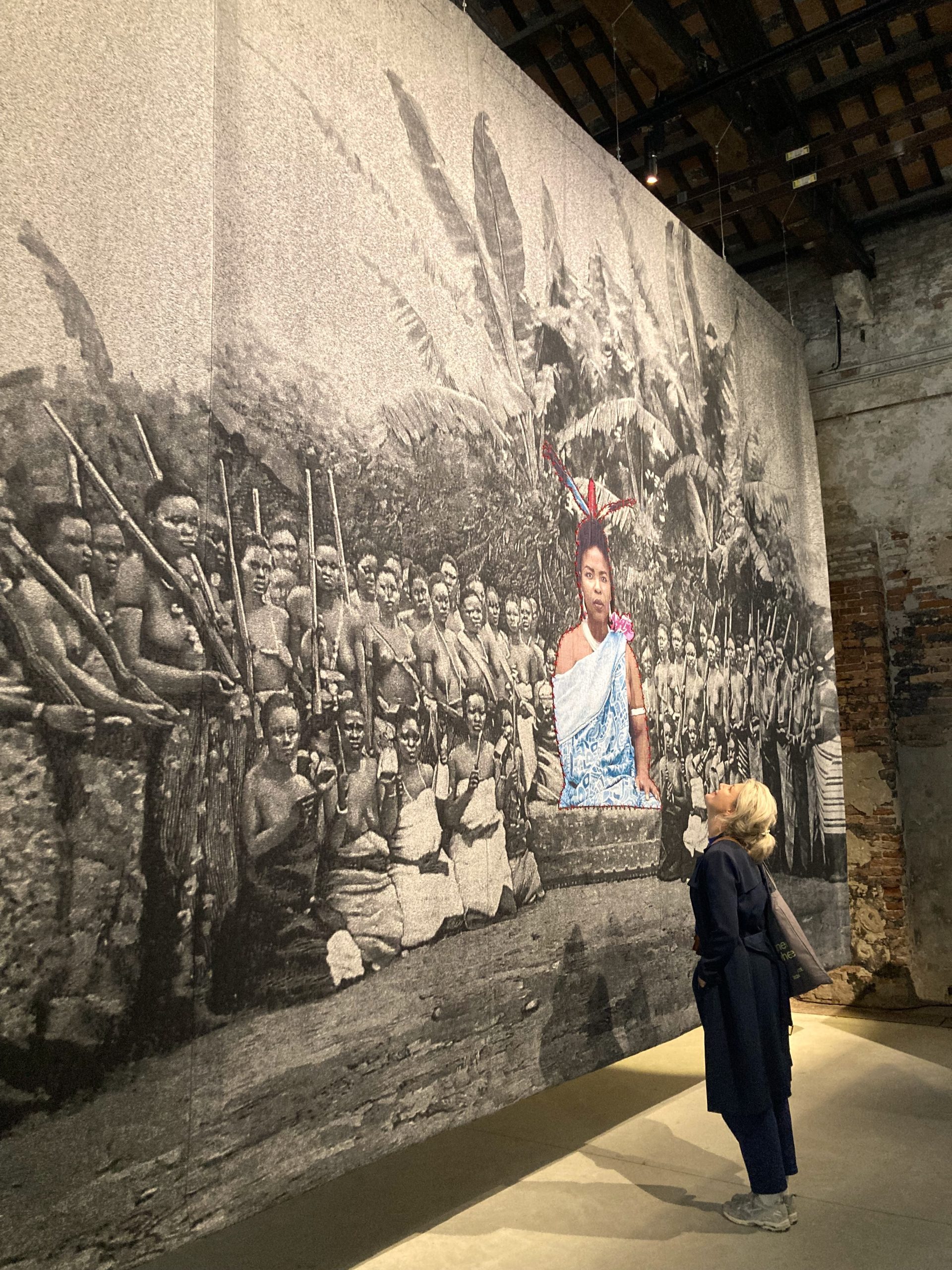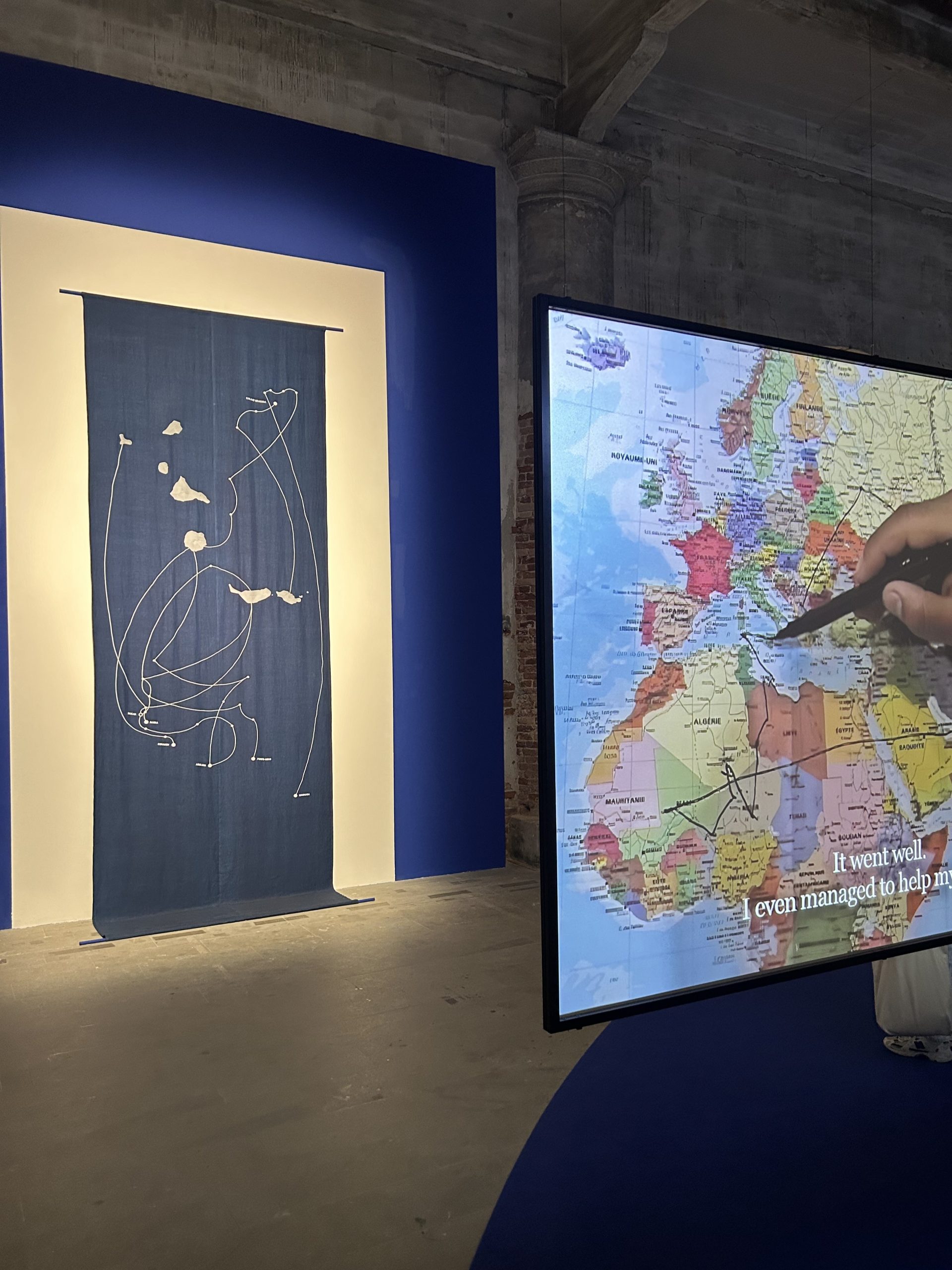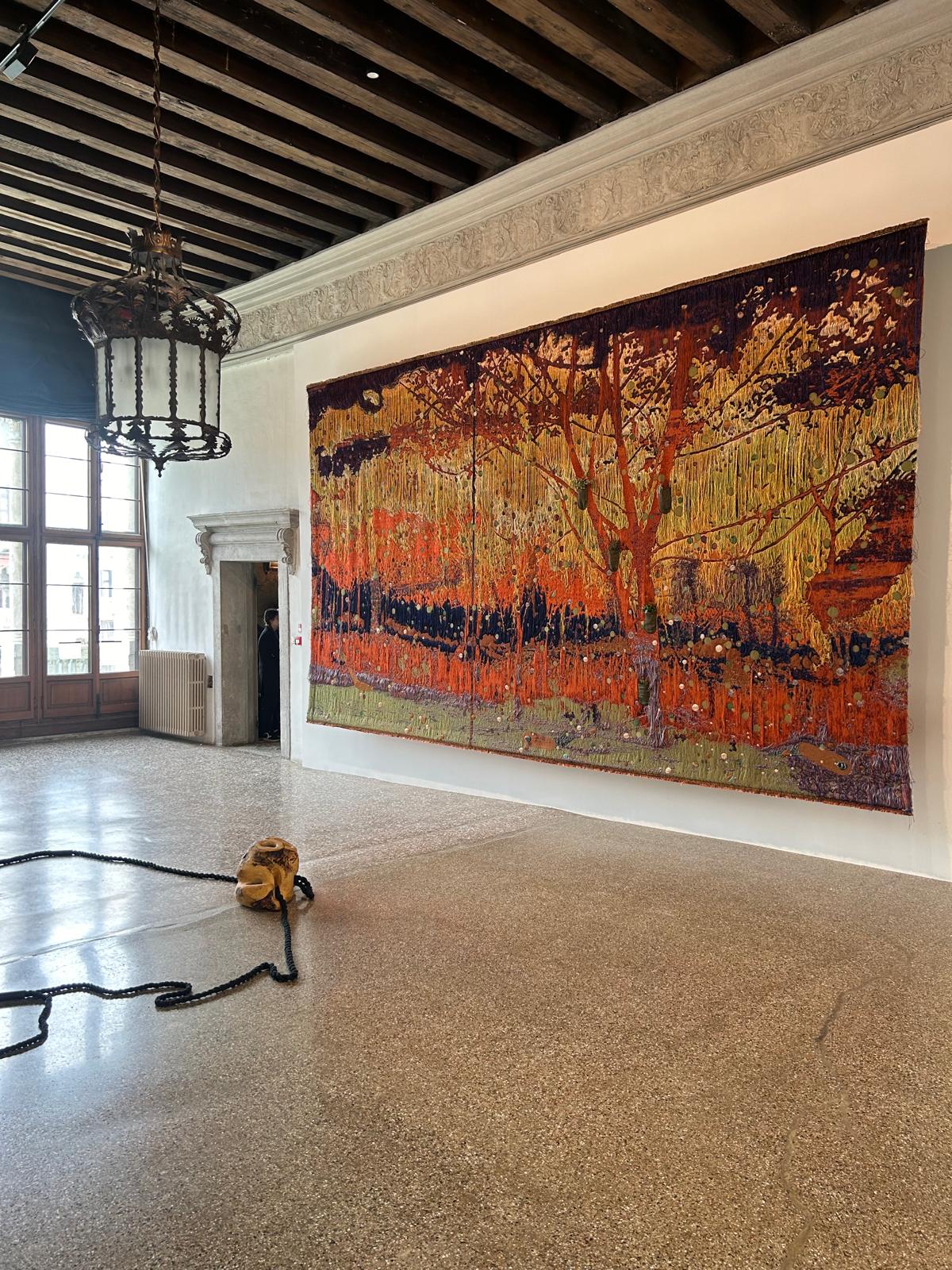The TextielLab has been well represented at the Salone in Milan for years. This year, we also debuted at the Venice Biennale, with several impressive tapestries by four international artists making their way from the TextielLab to Venice.
The eyes of the art and design world were on Italy last month, where both the Salone del Mobile in Milan and the much larger Biennale in Venice opened in the same week. Featuring participants from more than 80 countries, this international event is a survey of global contemporary art. Particularly striking this year is the amount of textile work on display. For the first time, this includes four works of art that were developed in the TextielLab: a previously developed tapestry by Otobong Nkanga and three recent pieces by Ishola Akpo, Liz Collins and Bouchra Khalili.
Foreigners Everywhere
The sixtieth edition of the Biennale, titled ‘Foreigners Everywhere’, focuses on those who are perceived as different. ‘The foreigner’ is a recurring theme and encompasses both the idea that we are always surrounded by foreigners and are essentially all foreigners ourselves – or feel like one. Related themes expressed in many works include migration, displacement, the legacy of colonialism, discrimination and xenophobia. The Biennale depicts a polarised world, albeit with a few glimmers of hope. The works developed in the TextielLab perfectly fit this theme.

Ìyálóde van Ishola Akpo
Ìyálóde
This can be seen in Ishola Akpo’s (Benin, 1983) Ìyálóde, which spotlights Africa’s unsung heroines. Displayed in Benin’s inaugural national pavilion, Akpo’s tapestry was inspired by the 18th-century Queen Tassi Hangbe and her relationship with the Amazons, a fierce all-female military unit. Using an old photo of these indigenous warriors as his starting point, Akpo obscured the only man to emerge as a leader behind a new image of a colourful, contemporary woman. Her oversized figure is sewn on to the fabric with prominent red stitches, making a statement intended to foreground strong women and recognise their role. Hence the title: Ìyálóde is a high-ranking female leader in traditional Yoruba communities.
To create the work, product developers Lotte van Dijk and Judith Peskens wove two separate tapestries of different materials. One is the archive image, woven with black, white and silver threads. Floats were used to capture the graininess of the old photo. The image of the queen was woven separately from much finer, vibrant and glossy yarns, with gold thread for her accessories and jewellery. Akpo put the finishing touches to the tapestry in Venice himself, securing the queen in place with thick red stitches to emphasise her insertion in the scene.

Rainbow Mountains: Moon & Weather by Liz Collins at the Venice Biennale
Rainbow Mountains
In the Central Pavilion, two tapestries by Liz Collins (US, 1968) also address gender. Made in the TextielLab, Rainbow Mountains: Moon & Weather hang on either side of a passageway and together form a single image. Above snowy mountain peaks, several bright rainbows arc across a menacing black sky. Collins describes it as a “fantasy of a queer Utopia that is just out of reach”. That fantasy is enlivened with ball lightning and a moon encased in pink spheres: a queer world in which queer can also be understood as truly unique. This is depicted here as a colourful natural phenomenon in an unruly landscape. It is a serious message that is cheerfully delivered, providing welcome relief amidst the show’s many melancholy works.

Sea-Drift by Bouchra Khalili: left in the TextielLab, right in Venice
Sea-Drift
Sea-Drift, which was embroidered in the TextielLab for Bouchra Khalili (Morocco, 1975), hangs in the Arsenale, the Biennale’s second venue. The tapestry is part of The Mapping Journey Project, in which Khalili detailed the personal experiences of refugees and stateless people over several years. The white embroidery on an indigo blue linen fabric maps the routes travelled by refugees from West Africa on their way to the Canary Islands. The perilous trajectories correspond with the ancient indigo routes, which is why Khalili decided to dye the fabric with natural indigo.

Unearthed – Sunlight by Otobong Nkanga
Unearthed – Sunlight
The final tapestry is one we have written about before. The exhibition ‘From Ukraine; Dare to Dream’ not only features an organ made from the remains of Russian missiles but also Unearthed – Sunlight by Otobong Nkanga (Nigeria, 1974). She developed the large-scale tapestry with Stef Miero in the TextielLab in 2021, as part of a series of six fabrics that tell a fascinating but oppressive story about the elements earth and water. The fabrics depict human destruction of nature and pressing social issues associated with life on earth. The series leads viewers from the deepest depths of the ocean in Abyss to the scorching heat of the sun in Sunlight. The latter will be on view in the Palazzo Contarini Polignac until 1 August. This woven landscape also exudes hope: a world in which destructive scorched-earth tactics make way for something much more beautiful.
The Venice Biennale runs until 24 November. The exhibition ‘From Ukraine: Dare to Dream’ featuring Otobong Nkanga’s work runs until 1 August.
The development process of Ishola Akpo’s Ìyálóde can be seen at the TextielMuseum in the exhibition ‘Secrets of Making #4’ from 8 June.
Text Willemijn de Jonge